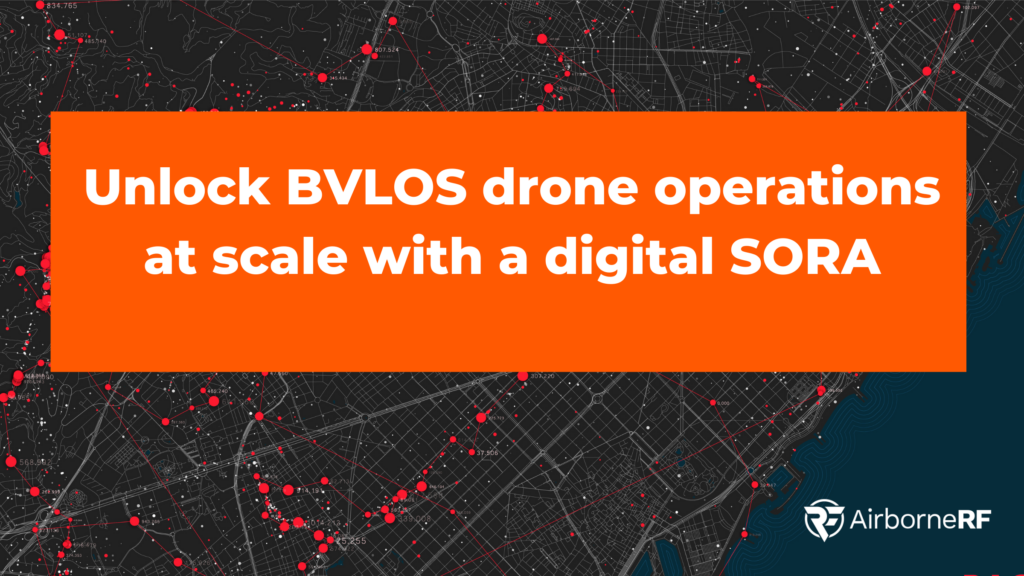The drone market is developing faster than many believe possible. Drones permeate our daily lives from the most straightforward applications such as wedding photography to complex operations such as infrastructure inspection and deliveries. While drones require a Visual Line of Sight (VLOS) to a pilot today, they will soon be flying remotely, Beyond Visual Line of Sight (BVLOS).
The Global market for BVLOS operations is set to grow at an astonishing 71.1% CAGR, according to DroneII. In Europe, all operations conducted in BVLOS are subject to strict aviation authority oversight. In particular, the European Commission, adopting the European Aviation Safety Agency (EASA) opinion on drone regulations, has mandated the performance of a risk assessment as the way to obtain operational authorizations in Article 11 of the EC regulation 2019/947.
The method chosen to perform such assessment in Europe is the Specific Operations Risk Assessment (SORA). The SORA methodology is developed by an international group of aviation authorities supported by industrial stakeholders named JARUS, Joint Authorities for Rulemaking on Unmanned Systems. It is a unique methodology that allows drone operators to assess their Concept of Operations and derive safety requirements proportional to the risk of such operations. It further enables the operators to propose means of compliance to those requirements and finally prove the safety of their operations. Seen from a different angle, SORA provides a legal framework to integrate BVLOS drone operations into the existing aviation ruleset.
Aviation authorities oversee and approve such risk assessments and ultimately issue the operational authorization. When performing SORA assessments, one of the critical challenges that drone operators face is the dynamic nature of the risks. When assessing population densities to better quantify the nature of the ground risks imposed by their operations, the lack of appropriate maps is the norm. Often, operators are asked to rely on static census data information that typically depicts where people sleep rather than where people are at the time of the operation. This challenge often results in authorities negating operational approvals due to high theoretical population densities when in reality, very low risk would be imposed by the operations.
A similar challenge emerges when determining the availability of in-flight connectivity in support of the safety of the flight. This information is unavailable to most drone operators, and operations are often negated due to the lack of data.
A new, dynamic set of risk data is required for drone operators to resolve these widespread challenges and unlock actual BVLOS operations at scale.
Mobile Network Operators (MNOs)are in a unique position to come to the rescue and provide this critical data, available for many years, in their data centres. The primary obstacle that has prevented such sharing in the past is the challenge of ensuring privacy and, most significantly, data security as well as a complete lack of interfaces connecting MNOs systems with aviation stakeholders. AirborneRF, the leading aerial connectivity data platform deployed within MNO data centres already today, provides a safe, secure and fully automated data exchange capability that completely satisfies the strict MNO requirements on privacy and data security.
The availability of critical information such as real-time ground density maps, in-flight connectivity performance and much more can now be made available in a standardized, digital format to aviation stakeholders worldwide. MNOs can confidently provide this critical data and further create value for drone operators by providing automated services supporting a true “Digital SORA”.
Drone operators, armed with dynamic, real-time and accurate risk data, can now confidently deploy aerial IOT applications and work towards fulfilling the promise of full BVLOS operations at scale.
Feel free to contact us at AirborneRF, and please do revisit our blog soon for the latest news.
Remember to follow us on LinkedIn and Twitter to be the first to hear AirborneRF’s news and updates.

